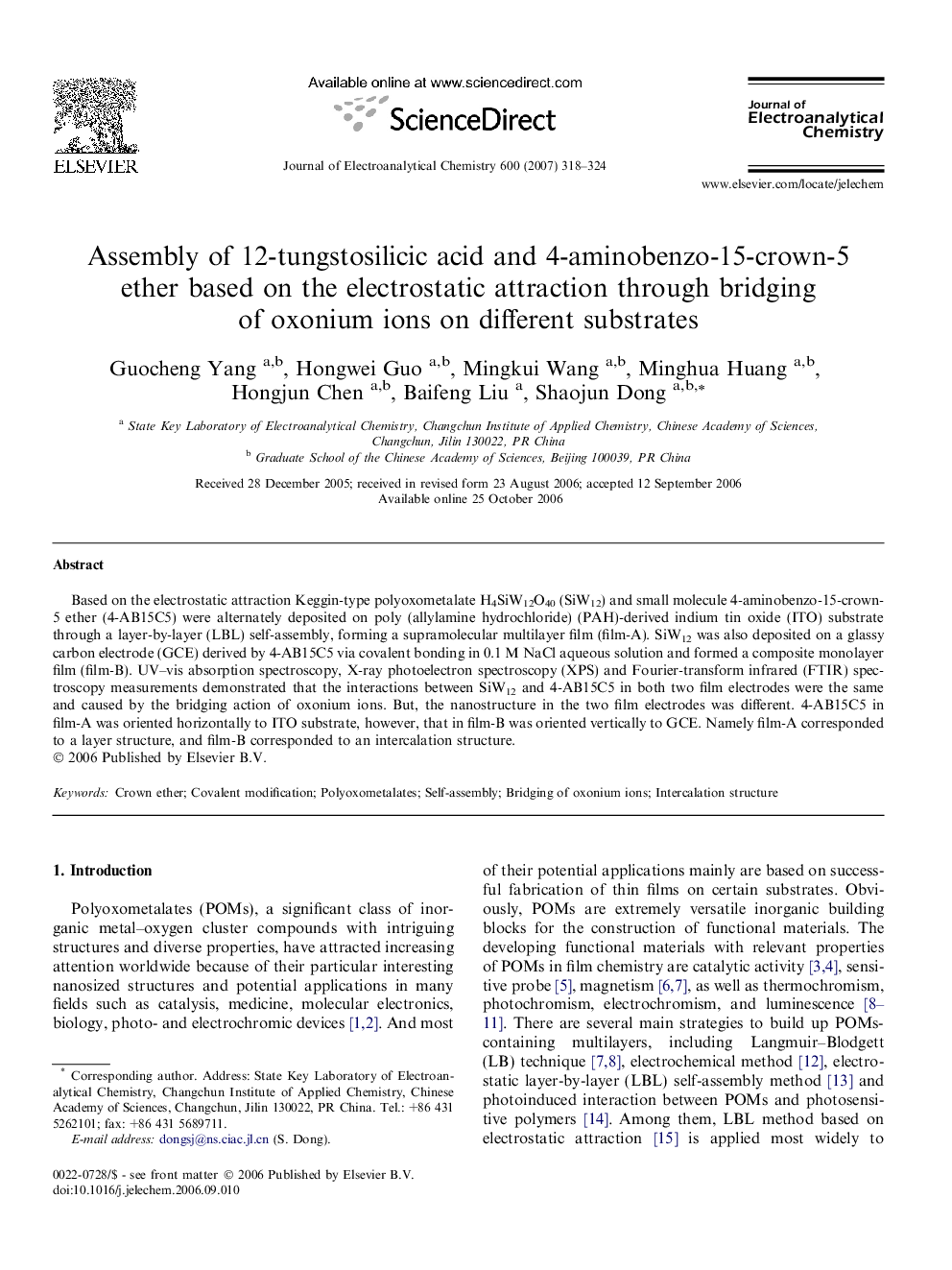| Article ID | Journal | Published Year | Pages | File Type |
|---|---|---|---|---|
| 220907 | Journal of Electroanalytical Chemistry | 2007 | 7 Pages |
Based on the electrostatic attraction Keggin-type polyoxometalate H4SiW12O40 (SiW12) and small molecule 4-aminobenzo-15-crown-5 ether (4-AB15C5) were alternately deposited on poly (allylamine hydrochloride) (PAH)-derived indium tin oxide (ITO) substrate through a layer-by-layer (LBL) self-assembly, forming a supramolecular multilayer film (film-A). SiW12 was also deposited on a glassy carbon electrode (GCE) derived by 4-AB15C5 via covalent bonding in 0.1 M NaCl aqueous solution and formed a composite monolayer film (film-B). UV–vis absorption spectroscopy, X-ray photoelectron spectroscopy (XPS) and Fourier-transform infrared (FTIR) spectroscopy measurements demonstrated that the interactions between SiW12 and 4-AB15C5 in both two film electrodes were the same and caused by the bridging action of oxonium ions. But, the nanostructure in the two film electrodes was different. 4-AB15C5 in film-A was oriented horizontally to ITO substrate, however, that in film-B was oriented vertically to GCE. Namely film-A corresponded to a layer structure, and film-B corresponded to an intercalation structure.
